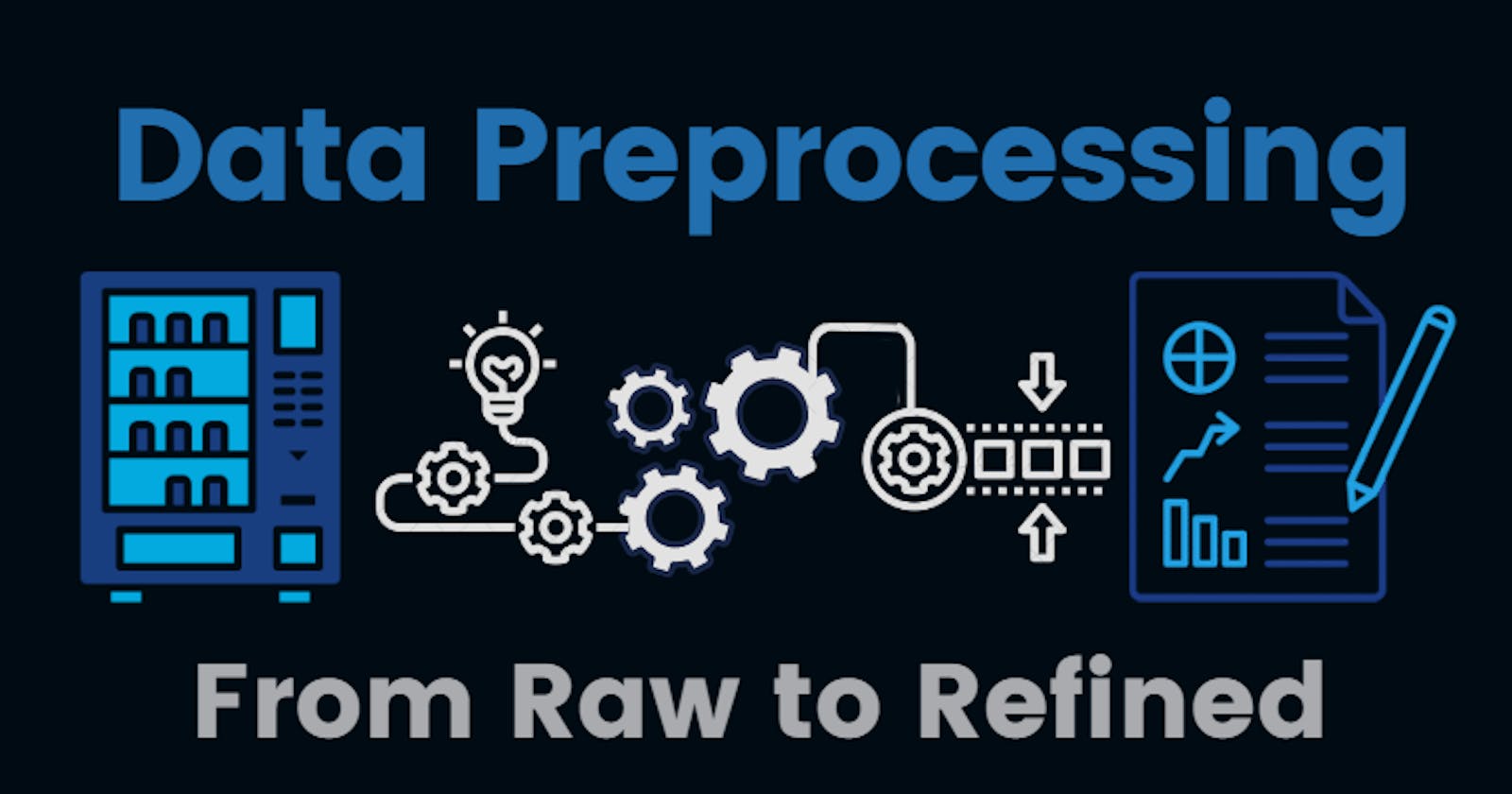Introduction
Welcome to the Data Realm ;)
Let's say you are wandering in a world full of anticipated potential talent, but the world praises those who have refined skills.
In the ever-evolving verse of data science, we can say that raw data is as good as raw food, expecting to be cooked. The same is with data, the process of data preprocessing transforms the raw data into properly cooked one, ready to serve to the guest travelers. It is a fundamental step that sets the stage for accurate analysis and robust modeling.
What is Data Preprocessing?
Data preprocessing is simply transforming raw data into a format that is suitable for analysis by data enthusiasts or professionals. Removing inconsistencies, errors, and redundancies that deteriorate the taste of data, data preprocessing sets the foundation for reliable insights and predictions.
What is the importance of Data Preprocessing?
As working folk, what we need at the end of the day, is good food. Don't you think what data analytics needs is good quality data, efficient resources, better model with unbeatable performance? Yes, then that's the importance of data preprocessing.
Improved Data Quality: Data preprocessing techniques improve the quality and integrity of the dataset. By handling missing values, outliers, and errors, the resulting dataset becomes more reliable and suitable for analysis.
Enhanced Model Performance: Proper data preprocessing helps in obtaining accurate and reliable models. It removes noise, reduces bias, and improves the overall efficiency of machine learning algorithms. Clean and preprocessed data allows models to learn patterns effectively and make more precise predictions.
Efficient Resource Utilization: Data preprocessing reduces the computational burden by removing unnecessary or redundant data. It eliminates irrelevant features, reducing the dimensionality and improving the efficiency of algorithms, saving computational resources and time.
Compatibility with Algorithms: Many machine learning algorithms have assumptions about the data they work with, such as normally distributed variables or scaled features. Data preprocessing ensures that the data adheres to these assumptions, making it compatible with a wide range of algorithms.
What are the techniques of Data Preprocessing?
Data Cleaning: Data cleaning is like handling the odd one out, handling missing values, outliers, and noisy data. Techniques such as imputation, interpolation, and outlier detection are the keys. Missing values can be filled by using statistical measures like mean, median, or regression-based methods. Outliers can be highlighted and removed using statistical methods or visual exploratory data analysis (EDA) techniques.
Data Transformation: Data transformation focuses on normalizing the data distribution and reducing skewness. Techniques like logarithmic transformation, square root transformation, and box-cox transformation help to achieve a more Gaussian distribution, which can improve the performance of certain algorithms.
Feature Scaling: Feature scaling ensures that all features have a similar scale, preventing certain variables from dominating others during the analysis. Techniques such as standardization (mean centering and scaling by standard deviation) and normalization (scaling values between 0 and 1) are commonly employed.
Encoding Categorical Variables: Categorical variables need to be encoded into numerical form for machine learning algorithms. Common encoding techniques include one-hot encoding, label encoding, and binary encoding, each with its advantages and use cases.
Dimensionality Reduction: Dimensionality reduction techniques help to reduce the number of features while preserving essential information. Principal Component Analysis (PCA), Linear Discriminant Analysis (LDA), and t-distributed Stochastic Neighbor Embedding (t-SNE) are widely used methods in this domain.
Conclusion
Hereby we can conclude that we don't need a whole lot of data to show our wisdom in our analytical skills, we need crisp data to please the tongue pallet of the world with our findings. To secure our solidity in the data realm, we must learn to unravel the data processing techniques and use them before applying modeling processes.
So here we come to an end, stay tuned for digging some new dimensions lying underneath, you might get the spice in your life.
Safe travel people!
